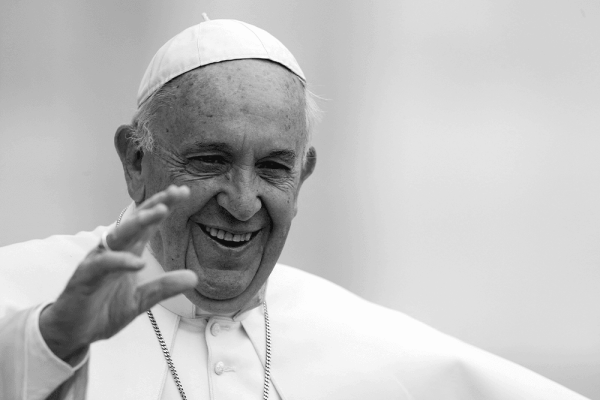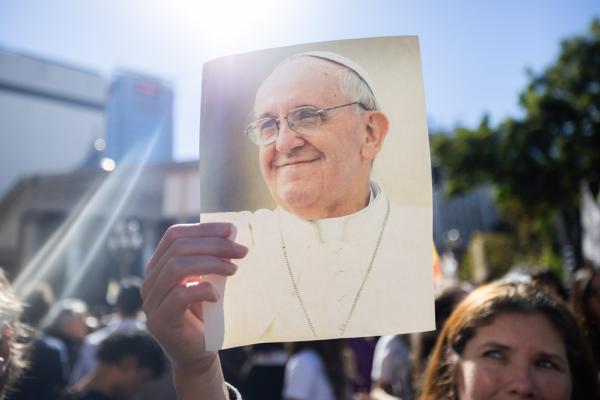For many this year, Feb. 14 is a day of mixed messages.
It’s Valentine’s Day, a time for chocolate, roses, and perhaps a dinner date. But it’s also Ash Wednesday, which for many Christians is the start of Lent, a period of penitence that precedes Easter Sunday.
How do clergy reconcile this calendar clash, the first of its kind since 1945? Approaches abound:
- An Oregon clergy couple celebrated Valentine’s Day early on a recent road trip because they knew they’d be busy at a United Methodist church’s Ash Wednesday service on Feb. 14.
- An Episcopal priest in Maryland has prepared a “Lovesong” service for Ash Wednesday that emphasizes various kinds of love that can be celebrated on Valentine’s Day.
- An upstate New York Catholic bishop suggested Mardi Gras might be a good time for romance this year.
Some clergy feel the church must come first on this dual day.
The Rev. Eilidh Lowery, pastor of Trinity United Methodist Church in Portland, Ore., who will help lead a worship service with her guitar-playing husband, said they’re used to sacrificing personal pleasures for ministerial duties.
“Our work has always seemed to impact Valentine’s Day,” she said, from her husband’s interviews as he sought ordination to a trip with lay leaders to hear Christian author Rob Bell. “This year we are focused on worship that night.”
In Upper Marlboro, Md., as Valentine’s Day and Ash Wednesday approached, the Rev. Peter Antoci, pastor of St. Thomas’ Episcopal Church, was talking with members of his parish about the seeming conflicting themes of love on Valentine’s Day and the penitence of the Lenten season.
“What are we going to do — put this out under the theme, ‘I love you; I’m sorry’?” he said he joked with church members. “But the more I thought about it the more I thought sometimes when something is odd or uncomfortable the best thing to do is to lean into the discomfort.”
He combined the prayers and ritual of Ash Wednesday with Scriptures about love — including the romance of Song of Solomon and the “God is love” verse from 1 John — and encouraged his music minister to choose selections more appropriate for a wedding than for Lent. The choir, along with his spouse, agreed to celebrate Valentine’s Day some other time this week so its members can sing at the 7:30 p.m. evensong service.
“It’s love in all of its senses,” said Antoci, who plans to say “Remember that you are beloved, and to love you shall return,” during the imposition of ashes (instead of the traditional “Remember that you are dust, and to dust you shall return”).
Taking a different approach, Catholic bishops such as Buffalo’s Richard J. Malone have opted to stick with traditional Ash Wednesday plans and said church members should make the “small sacrifice” of fasting that day as they consider the “great love” he said was demonstrated through Jesus’ suffering and death.
“Those who are accustomed to celebrating Valentine’s Day might do so perhaps the day before — join it up with Mardi Gras, a great time for double celebration — or another nonpenitential day,” he said in a “Required Fasting” video posted on his Twitter account.
Andrew W. Lichtenwalner, executive director of the U.S. Conference of Catholic Bishops’ department dealing with laity, marriage, and family life, said Ash Wednesday “takes precedence as a day of fasting and abstinence” even as the church marked the U.S. celebration of “National Marriage Week” that concludes on Feb. 14.
“The coincidence of Ash Wednesday and Valentine’s Day is a way for Catholics to reflect on the true meaning of love, an act of self-giving,” he said.
Lent also ends with another coincidence: Easter Sunday falls on April 1, or April Fools’ Day.
In an Episcopal Cafe column titled “This is no time to be cute,” the Rev. Andrew T. Gerns of Trinity Episcopal Church in Easton, Pa., argued that neither day bookending Lent should leave tradition behind.
“And this is not a moment for cuteness, it is [a] moment of humility,” he wrote, adding that six and a half weeks later, “it won’t be a time for pranks, but for awe.”
Other columnists recommended ways to live out the spirit of the day — named for more than one St. Valentine, the first of which was no patron of love — as well as the Christian obligation to begin Lent.
Canadian writer Clare Lazzuri, writing in The B.C. Catholic, a newspaper for British Columbians, offered options that started with each letter of the word “heart” — from helping around the house to talking to God each day.
Robert Carnes, writing for ChurchMarketingSucks.com, suggested 15 ways churches could connect the two occasions, from sending handwritten love notes to houses within a one-mile radius to working on a service project.
But one idea on his list that was separately debated on Twitter did not get a lot of love from some clergy: heart-shaped ashes.
“Drawing a cross is hard enough,” Lowery said of the gooey ashes-and-oil combination she imposes on people’s foreheads.
Antoci agreed: “You can’t stay inside the lines.”
But both Lowery and Antoci found a way to incorporate sweetness — even if delayed — into the dual day.
Lowery said her husband of 15 years will likely make heart-shaped pancakes for her and their 12-year-old daughter – “chocolate chip pancakes, of course.”
Antoci took another approach: chocolate candies with a Scripture passage on each wrapper.
“As people leave the church on Wednesday, I’ll greet them at the door as they leave and I’ll give everybody a piece of Valentine’s chocolate,” he said, “with the advice that they should read it and eat it on Sunday, which is not a fast day.”
Got something to say about what you're reading? We value your feedback!







